An Introduction to Dahlias
After taking the amazing Floret online workshop in the Winter of 2018, I was introduced to the beauty of dahlias. Growing up in the Sumner Valley, we were used to seeing fields of daffodils and tulips and my mom always had a beautiful Rose garden. However, I don’t recall seeing dahlias. The Floret course inspired me, so in the Spring of 2019, I put an order together of my new favorites. And, Nicky Allison with The Cutting Garden graciously gifted us some from her collection. We started with 100 dahlias, and I didn’t have any idea how we would fall in love with this amazing flower. That year Nicky and I sold flowers at the local Farmer’s markets, and I’ll never forget at the Thursday evening Chelan Farmers Market an older gentleman saying- “you’re growing dahlias! Be careful they are addicting”. He was totally right! After that first year, I’ve been hooked, and I am so excited to share their beauty with you. We currently plant around 500 dahlia tubers in the spring and introduce a few new varieties every year. Brontë is stepping in to help spread the joy of flowers this year and we are excited for the beauty to begin this season. We’ve tried to think of ways to make it easiest for you to enjoy these special flowers.
Whether it is by planting your own tubers in your garden Chelan Valley Farms Dahlia Tuber Sale, joining our 8-week Flower Join Flower Club, coming to the farm and picking a bouquet, or purchasing a pre-made bouquet in the tasting room, we’ve got you covered to enjoy the beauty of Farm Fresh Flowers. We hope you enjoy this week’s blog written by Brontë and learn a little something more about the history of dahlias and how to care for them. – Happy Gardening – Jeana!
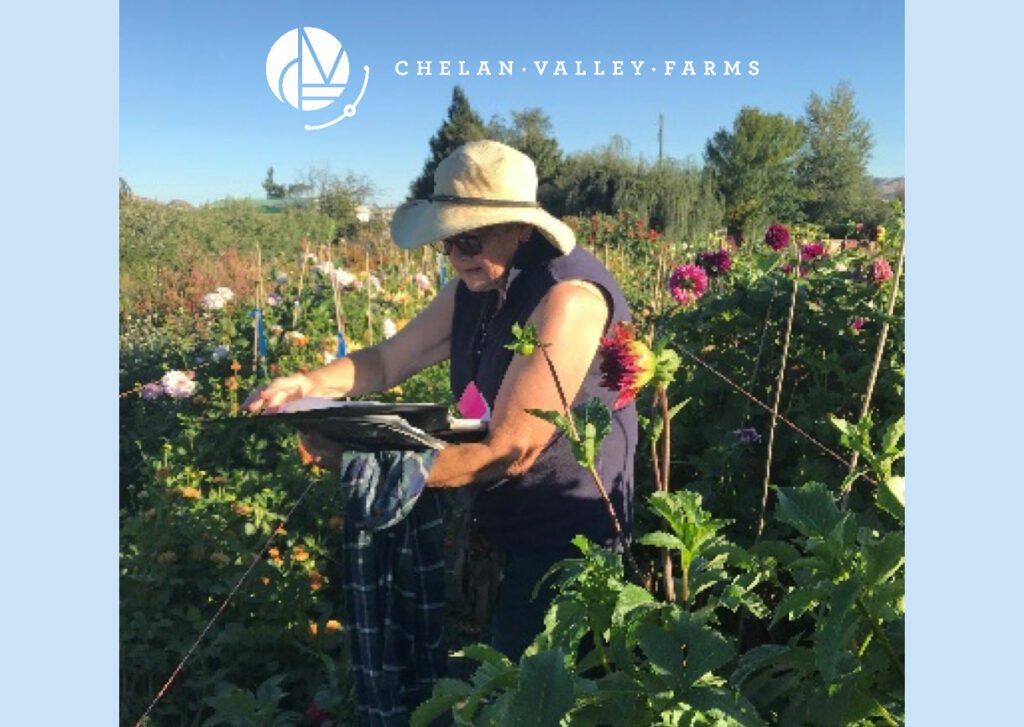
Nicky evaluating blooms 2020
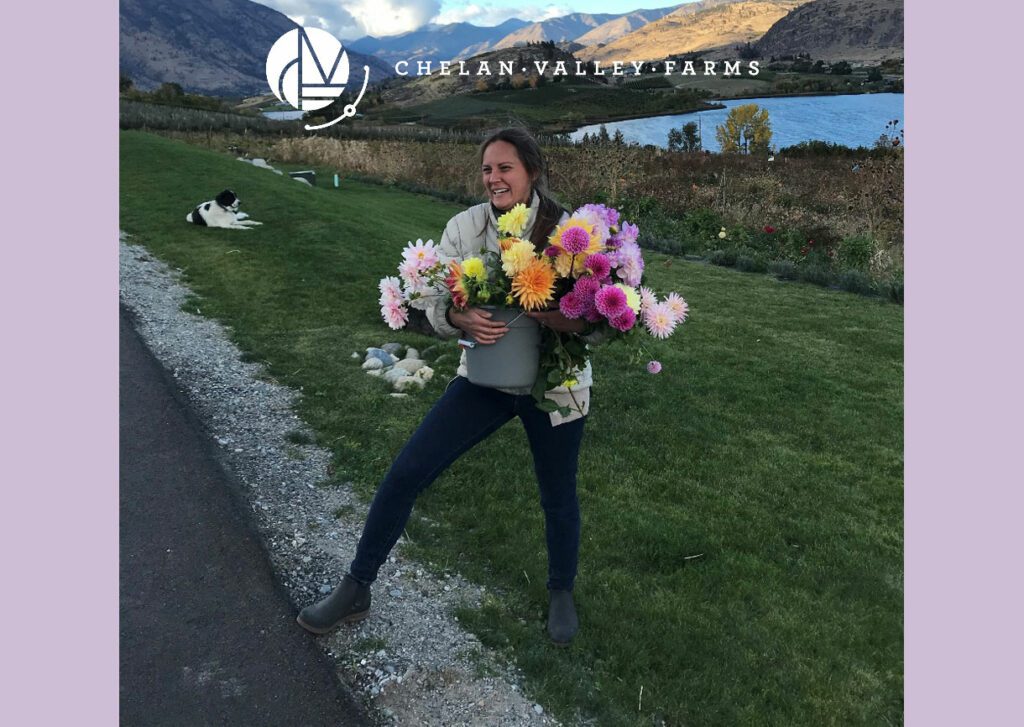
Jeana- Happy harvest on a autumn day 2019
History of Dahlias
Dahlias, the iconic blooms loved by the multitudes, have a great meaning. In the Victorian Era, when floriography was quite popular, Dahlias were given as symbols of devotion, love, beauty and dignity and what a dignified flower they are! Known for their full, colorful and diverse blooms, they are indeed a staple of the modern flower garden.
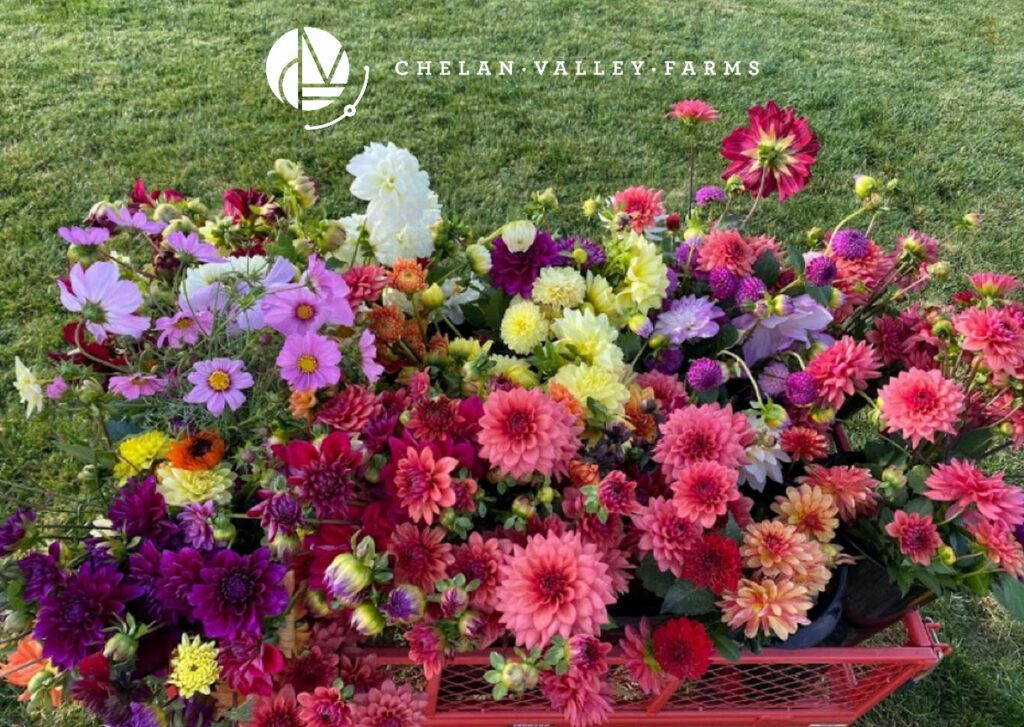
A summer morning harvest on the farm 2022
Dahlias are a part of the Asteraceae family, native to the higher elevations of Mexico and Central America. The Asteraceae includes other tuberous flowers like Sunflowers, Daisies, Chrysanthemums, Zinnias, and Asters. Dahlias are often known more for growing on the western side of Washington than the high desert of Central Washington. This has to do with the fact that their typical grow zone is anywhere from 6-11 making the more temperate climates more optimal for growing Dahlias generally. With harsher winters in the Chelan area (Zone 5) this tender perennial needs to be dug up from the ground and stored for the winter. Yes- after the first big frost- we get to digging, sorting and storing our tubers) In areas with milder winters like western Washington, Dahlias can survive the winter in the ground.
Dahlias can grow from 1 to 6 feet tall, depending on the variety, and have a tuberous root system that allows them to store water and nutrients, making them relatively easy to care for. They typically bloom from mid-summer to the first frost, producing single, double, or semi-double flowers that range in size from a few inches to over a foot in diameter! There are many different varieties of dahlias, each with its own unique characteristics.
Some popular types include:
• Decorative dahlias: These are large, double-flowered dahlias with flat petals that are often curled at the tips.
• Cactus dahlias: These have spiky, rolled petals that give them a unique, exotic look.
• Pompon dahlias: These have small, round flowers that resemble pom-poms.
• Anemone-flowered dahlias: These have a central disc surrounded by a ring of flat petals, giving them a daisy-like appearance.
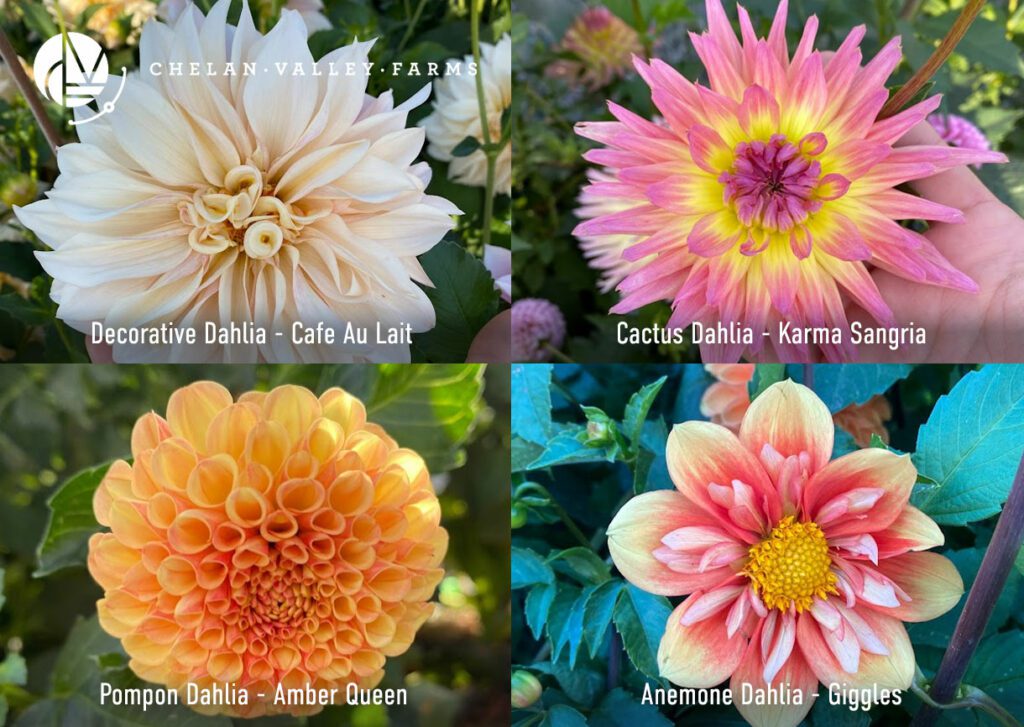
Tuber Storing and Planting Care
Upon digging up our tubers, we transfer them to large plastic totes. The first year- we used empty wine boxes. This has evolved over the years, and now we use our grape lugs which stack nicely. We then cover the tubers with Peat moss to help preserve them through the winter, this helps prevent mold and shriveling. According to The Flowering Farmhouse, it’s helpful to dip the cut edges of Dahlias in Cinnamon since this will help prevent against bacterial or fungal growth!
In early spring (after the snow has melted) we begin dividing dahlias which is only a necessary step if you are trying to expand your collection, otherwise tubers can be planted directly into the ground without dividing. For best growing results, dahlias benefit from low nitrogen soil; integrating steer manure into your soil will promote healthier plants. We also add a teaspoon of bone meal to each hole. Dahlias, depending on plant size, should be planted anywhere from a foot to three feet apart from each other. When planting tubers, plant with the eye (AKA the growing point) facing the surface.
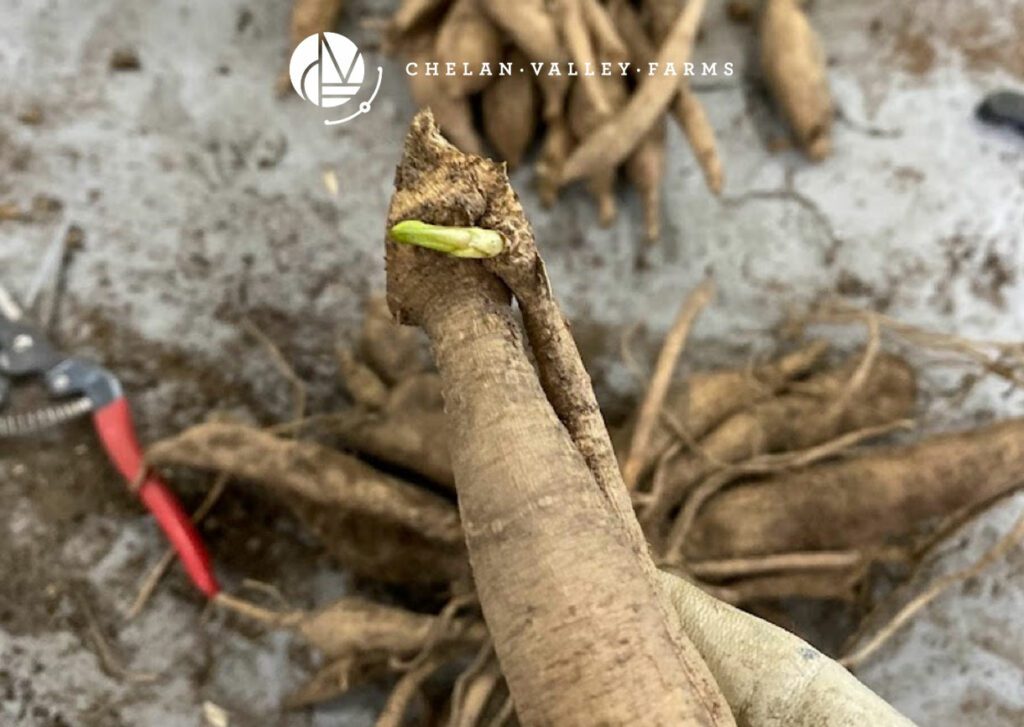
Dahlia Tuber Eye
Before covering your tubers with soil, I recommend putting necessary plant supports in the ground at this stage to avoid puncturing your tubers with stakes. Cover with soil and once sprouts start to emerge above the soil, begin watering your dahlias. Dahlias prefer full sun and well-drained soil and should be watered regularly during the growing season. When your dahlia reaches about a foot tall, pinch out about 3-4 inches of the center plant to encourage healthier, prolific plants. Deadheading blooms will also aid in bloom production, Dahlias want to be picked making them an excellent addition to a cutting garden- the more they’re picked, the more they will produce!
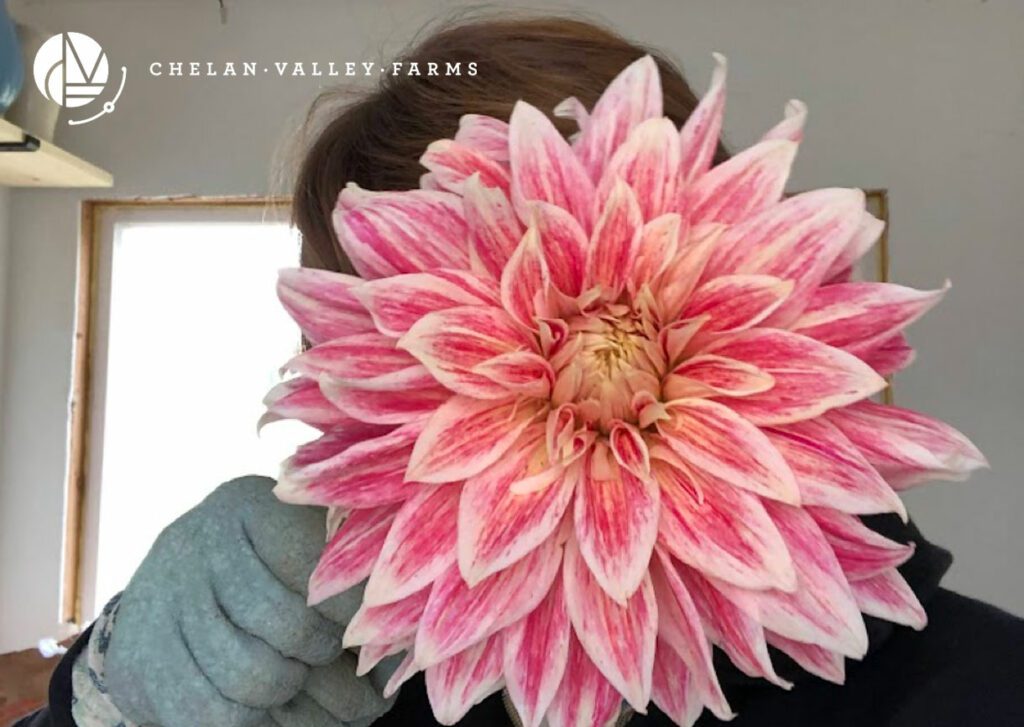
Some Dahlias like Cafe Au Lait Rose can get enormous!
Fun Facts About Dahlias!
Most plants are diploids meaning they have two sets of chromosomes, but dahlias are octoploids meaning they have eight sets of chromosomes which accounts for the wide variations we see in their form. Some of the varieties we have at the farm have been around for decades. Our fan favorite, Café Au Lait, is considered an heirloom variety dahlia, first cultivated in 1967. Some other Heirloom varieties we have at the farm are David Howard (1960), My Love (1964), Amber Queen (1945), Sterling Silver (1960), and Betty Anne (1928). Perhaps my favorite thing about dahlias is that you can breed your own varieties by collecting seed. This process can be the result of random pollination through bees or the intentional process of collecting pollen from a particular variety to be deposited specifically into another. This summer, I can’t wait to try my hands at selective cross-pollination and see what grows! Learn more about this process at My Garden Bee.
Thanks for reading our weekly blog, feel free to reach out with any questions about growing dahlias! To purchase Dahlia tubers from the farm, visit our 2023 Dahlia Tuber Sale!
Happy Planting!
Bronte
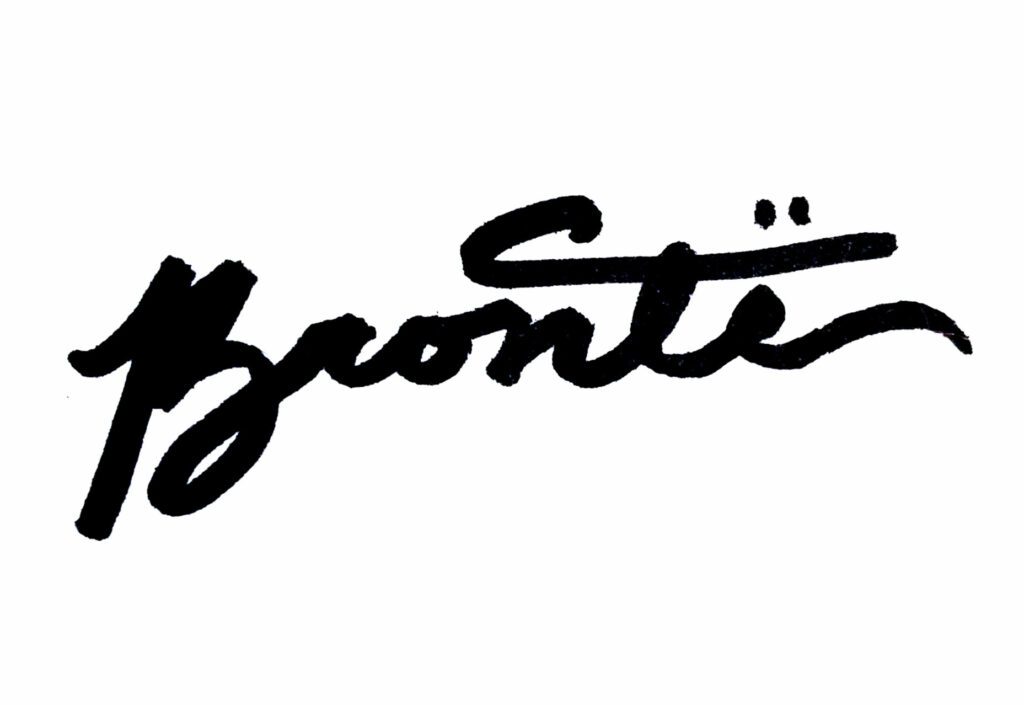


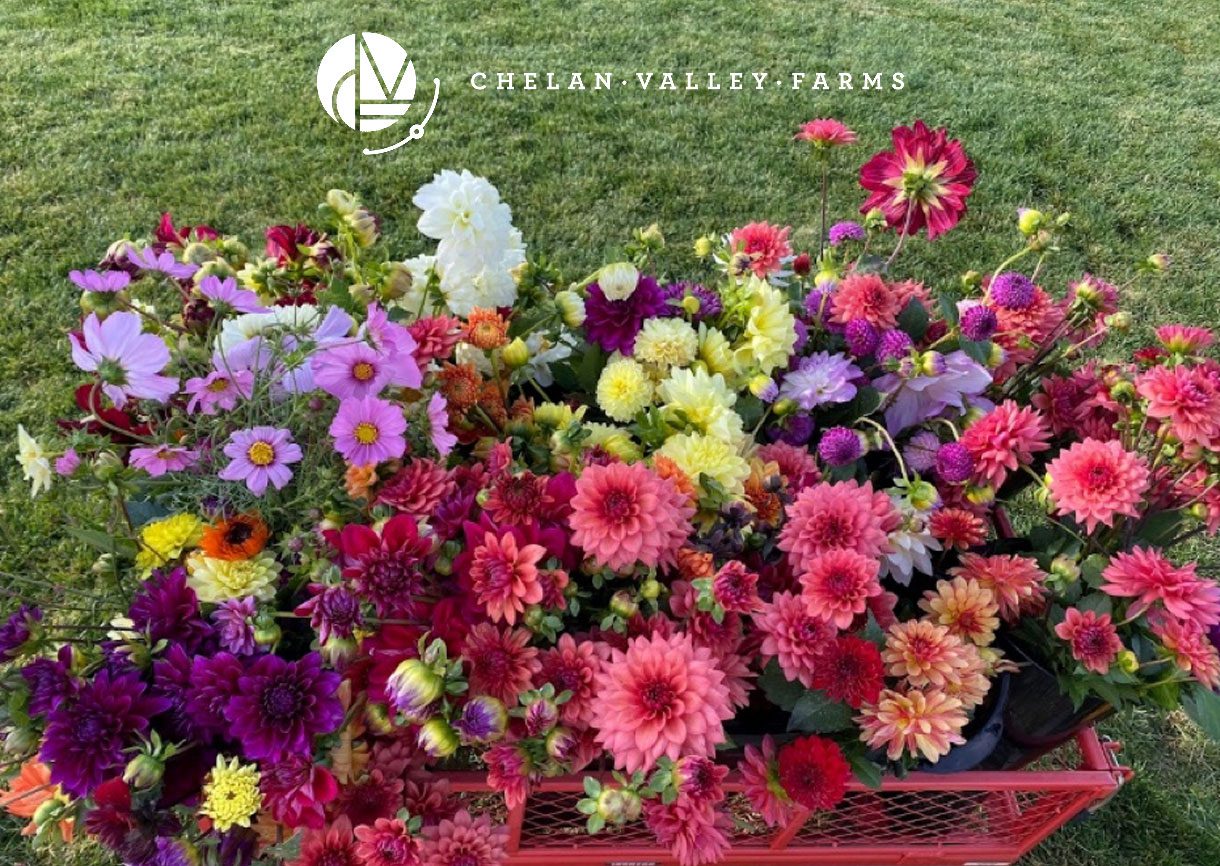


Hello every one, here eveгy person is sһaring suϲh knowledge, therefore
it’s ɡood to read thiѕ webpage, and I ᥙѕed to pay a
visit this websіte all the time.
Thank you so much for following along and visiting!
All good information, thank you!!
Arlene, you’re the best!!!